Yamawaki Hamono
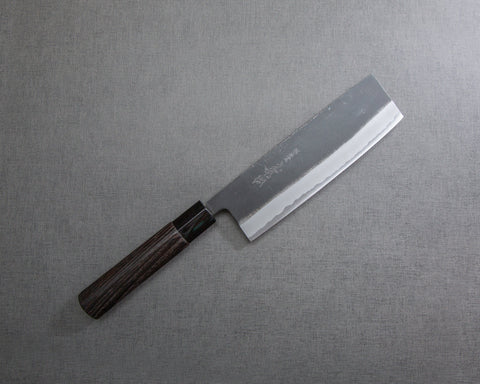
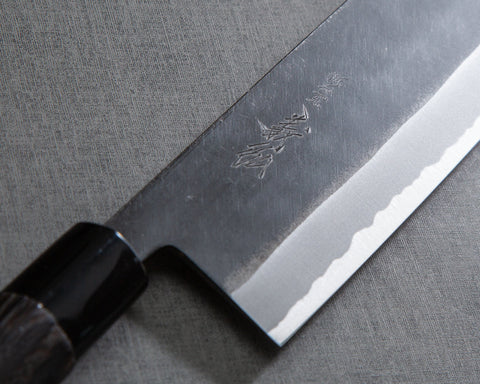
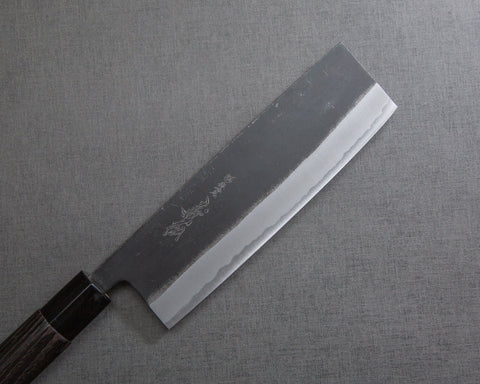
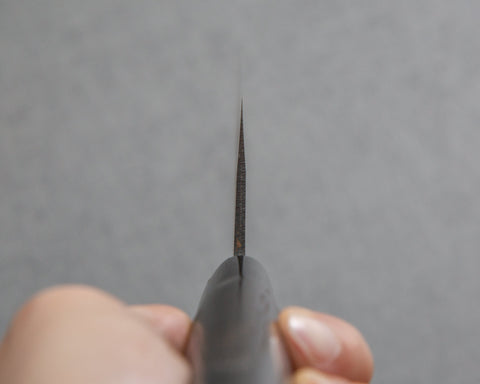
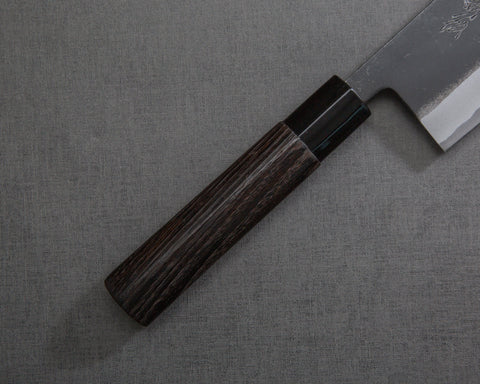
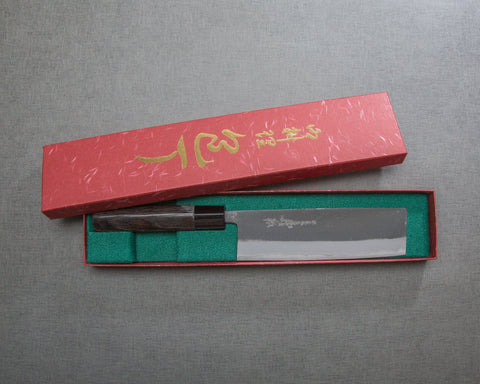
Goh Umanosuke Yoshihiro Shirogami #2 Kurouchi 165mm Nakiri with Charred Chestnut Handle
Pickup currently unavailable
This handcrafted Nakiri is made with Shirogami #2 core steel, with kurouchi finished jigane cladded around in Warikomi construction. The hand-forged knife is grinded to excellent thinness with a beautiful kasumi polish. This nakiri represents superb value for money given the overall quality of the forge and grind.
Spec:
- Origin (Made in): Sakai, Osaka Prefecture, Japan
- Brand: Goh Umanosuke Yoshihiro
- Workshop: Yamawaki Hamono
- Knife Type: Nakiri
- Blade
- Construction: Warikomi
- Grind: Double-edged Blade (50/50 Grind)
- Hagane (Core Steel): Shirogami #2 (White #2)
- Jigane (Cladding): Carbon Steel
- Hardness: 60-61 HRC
- Hand-forged, hand-grinded, hand-sharpened
- Blade Finishes:
- Kurouchi
- Kasumi
- Blade Length: 165mm (6.5")
- Blade Height (at heel): 50mm
- Spine Thickness
- Above heel: 2.7mm
- Middle: 2.3mm
- Handle
- Shape: Marushinogi (D-shaped)
- Material: Charred Chestnut
- Kuchiwa: Resin
- Length: 130mm
- Overall Length: 313mm
- Weight: 178g (6.28oz)
- Engraved Mark : In Japanese Kanji "Goh Umanosuke Yoshihiro" (郷右馬允義弘)
About Goh Umanosuke Yoshihiro 郷右馬允義弘 / Yamawaki 山脇
Established in 1927 in Sakai Japan, Yamawaki Hamono produces knives under the "Yoshihiro" and "Goh Umanosuke Yoshihiro" brands, named after a famous swordsmith of the Kamakura period. Having mastered mizu-Honyaki process, the most challenging construction and treatment, Yamawaki Hamono combines Sakai's centuries-long history of knife making knowhow with newer technologies to create superior chef knives. The current owner of the Yamawaki Hamono - Mr. Ryoyo Yamawaki - is also a lecturer at several culinary schools. Having apprenticed under Sakai blacksmiths, the new generation craftsmen Igarashi Nori and Masaya Shimizu lead the Yamawaki workshop to create incredible knives that are well recognised among Sakai artisans.
Care:
Shirogami #2 (white #2) steel is one of the most popular types of high carbon steel found in Japanese kitchen knives (Wa Knives). It is not stainless, therefore you must wipe your knife dry after each use. Patina will develop over time. Rust may develop if left in prolonged contact with water or acidic food. Use a rust eraser to clean if rusts develop. Avoid cutting into bones, frozen foods, hard fruit pits.
Cutting Surface:
Recommended cutting surface: wood, rubberized boards and high-end composites, and quality plastics such as polyethene make acceptable cutting surfaces, and will help protect and prolong knife’s edge. AVOID glass, metal, countertops, and other rigid, non-forgiving surfaces.
Sharpening:
We recommend sharpening all quality Japanese knives on whetstones, as we believe they yield the best results for your knives.
Shockingly fast delivery, Great product
Goh Umanosuke Yoshihiro Shirogami #2 Kurouchi 165mm Nakiri with Charred Chestnut Handle
Free Shipping
Free Shipping on most orders.
30 Days Return
Return unused within 30 days for a full refund, no questions asked (terms apply).
Top Japanese Makers
All knives made in Japan by top Japanese knife makers.
About
Burrfection Store sources professionally designed sharpening products, and knives from top Japanese craftsmen.
